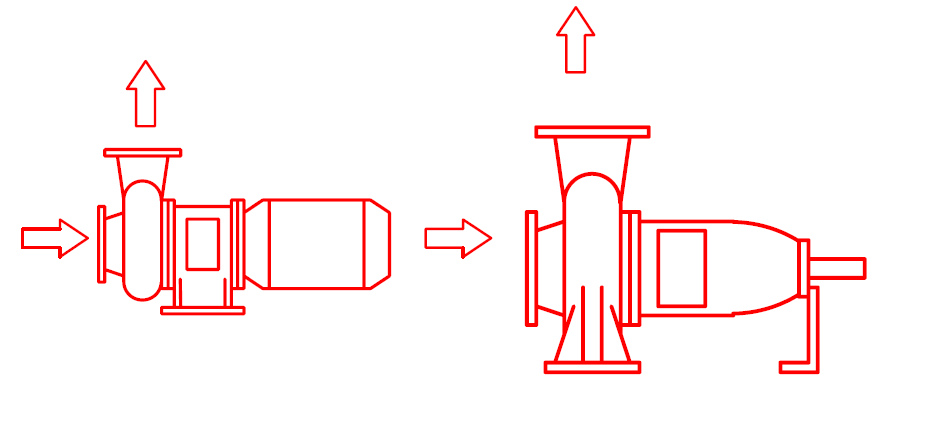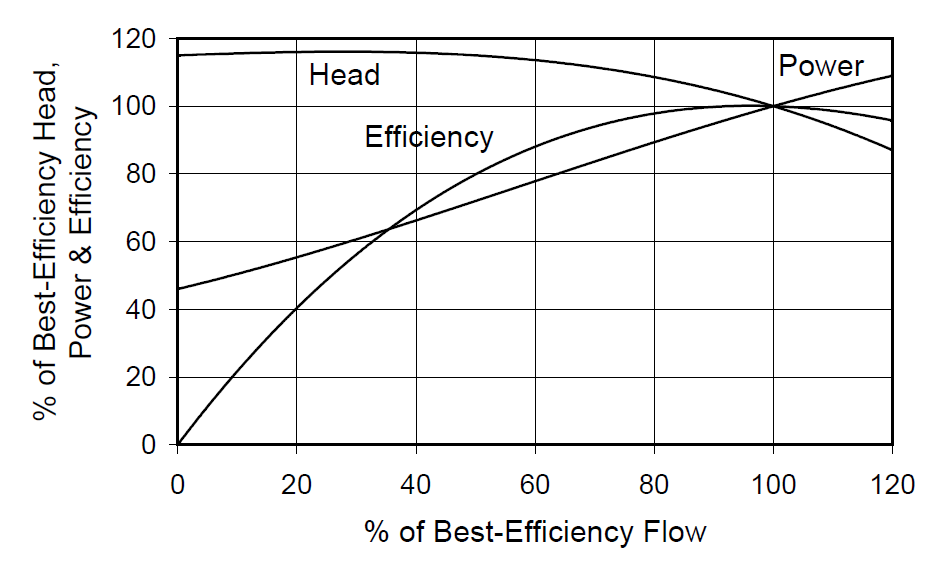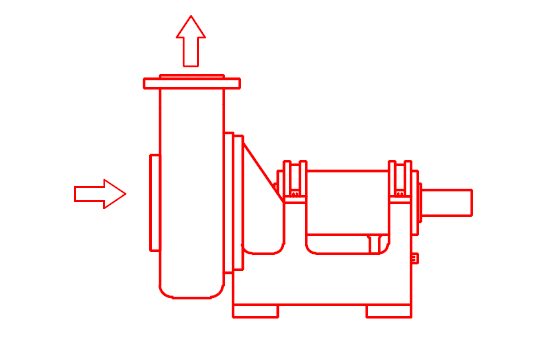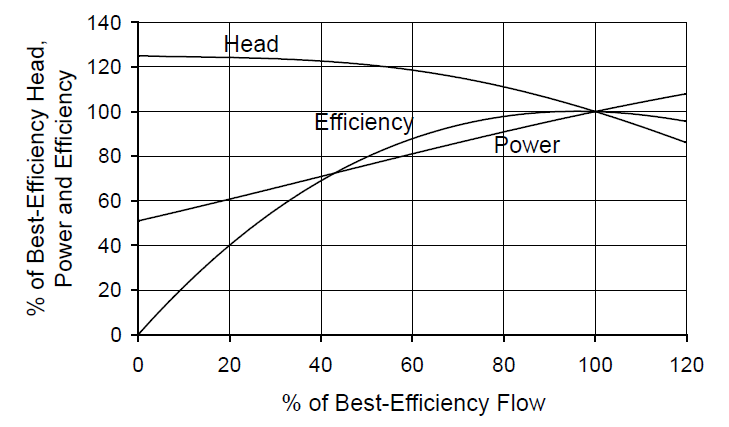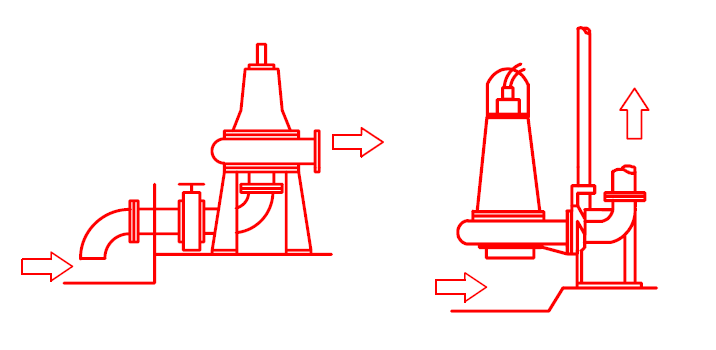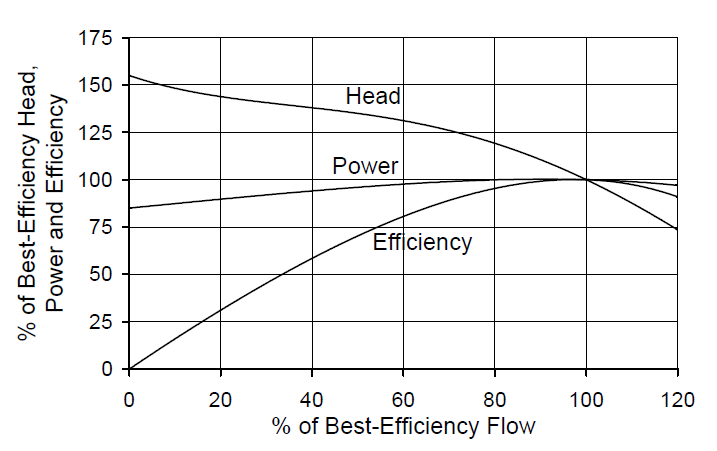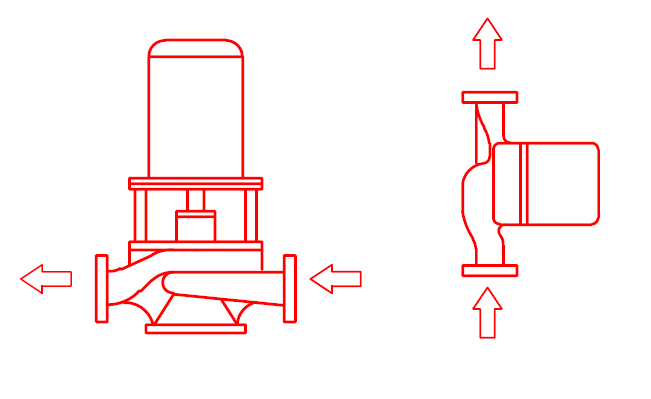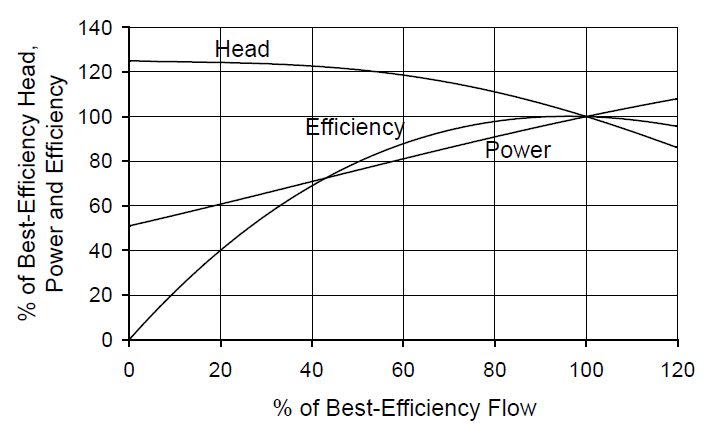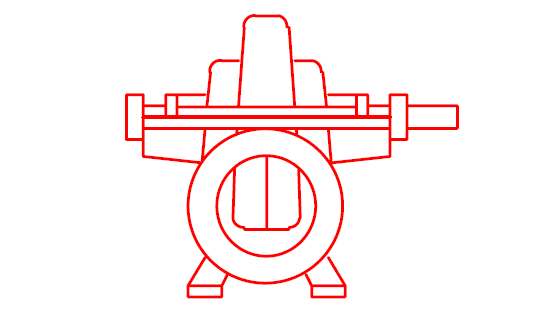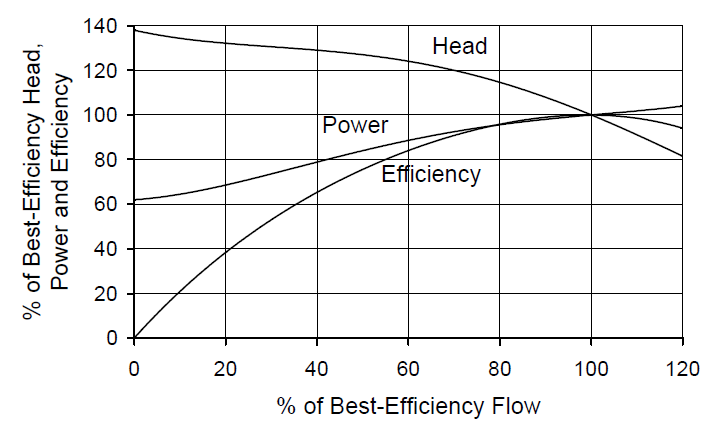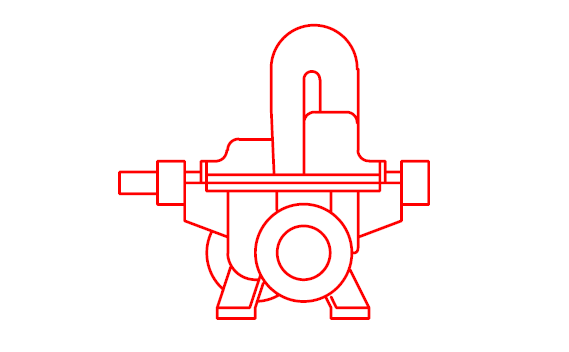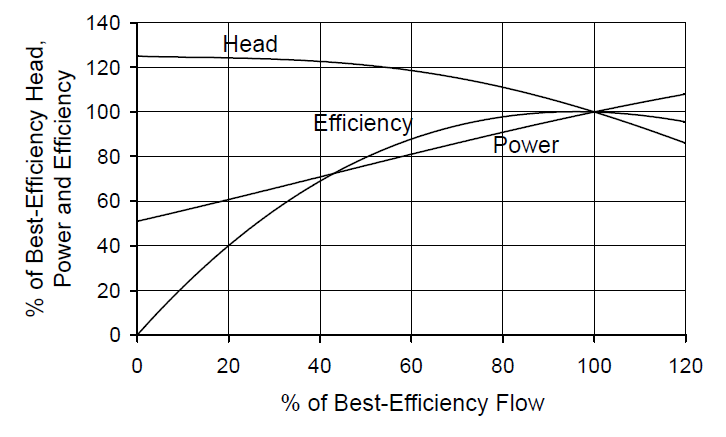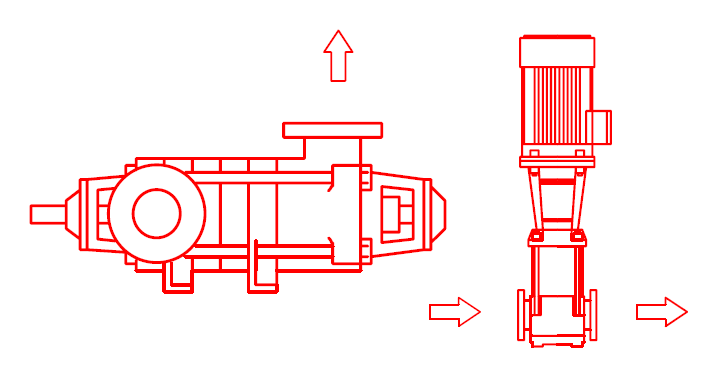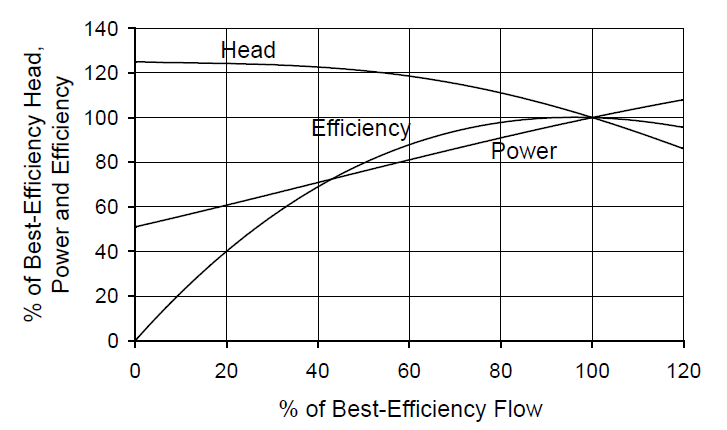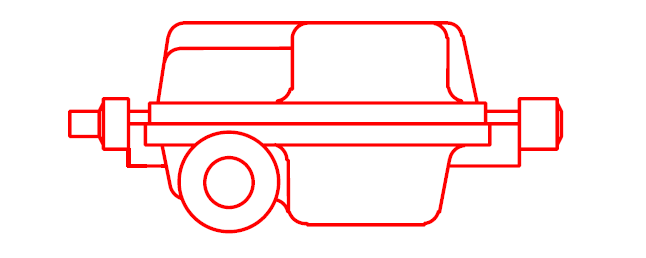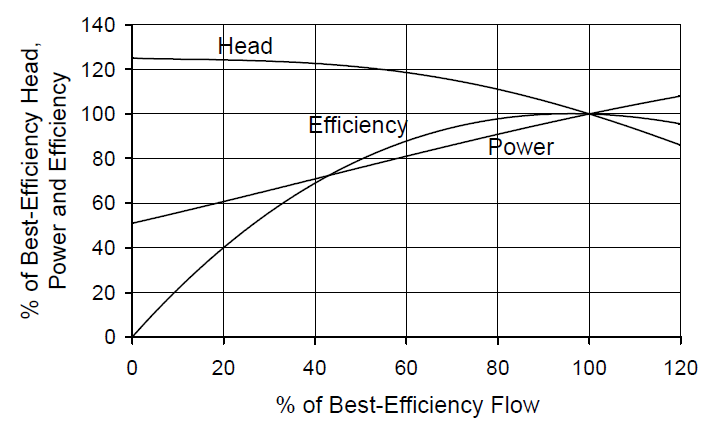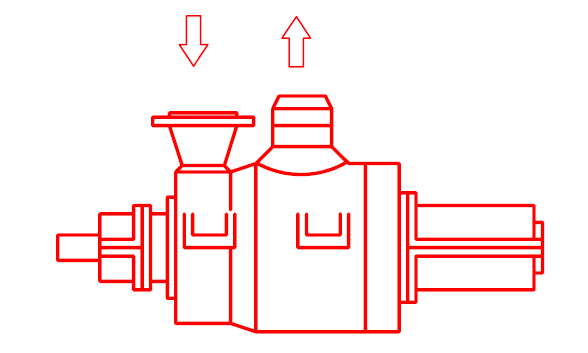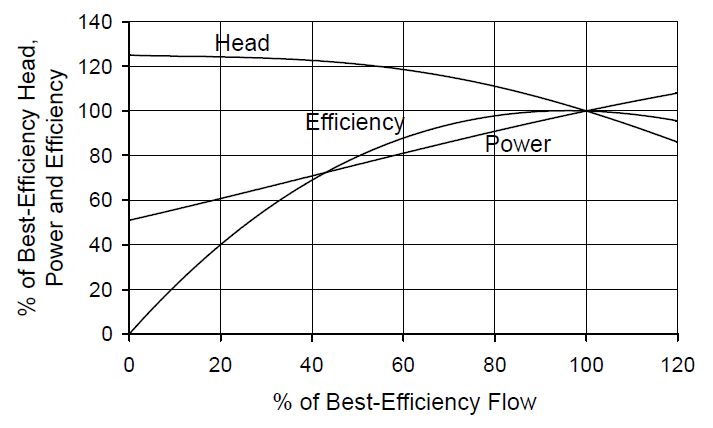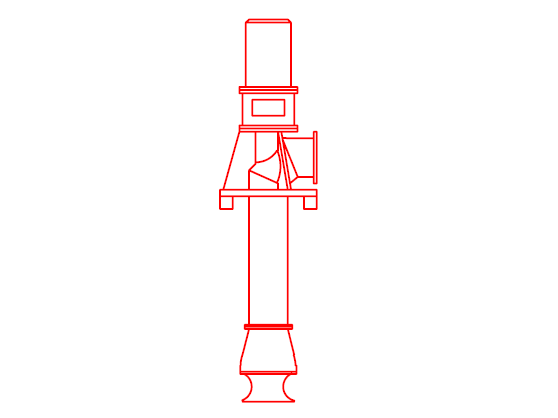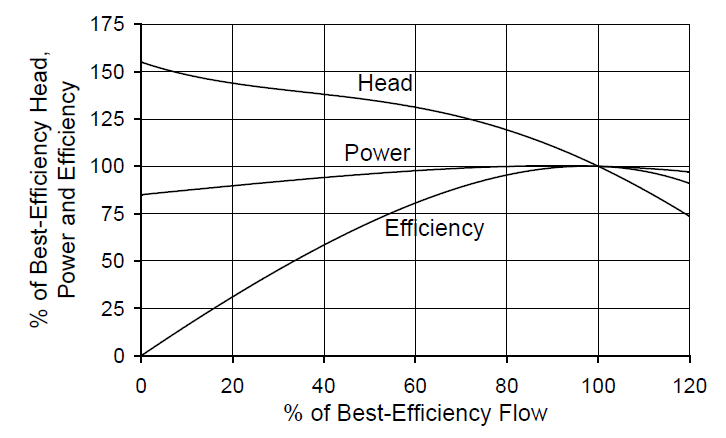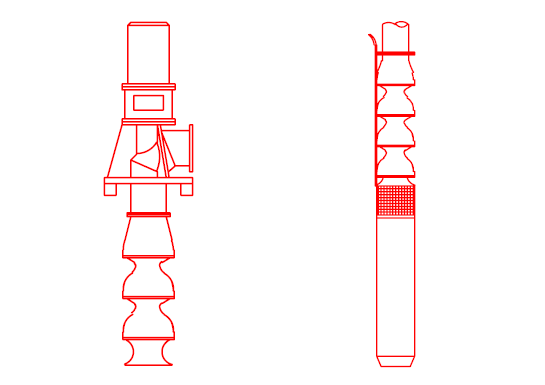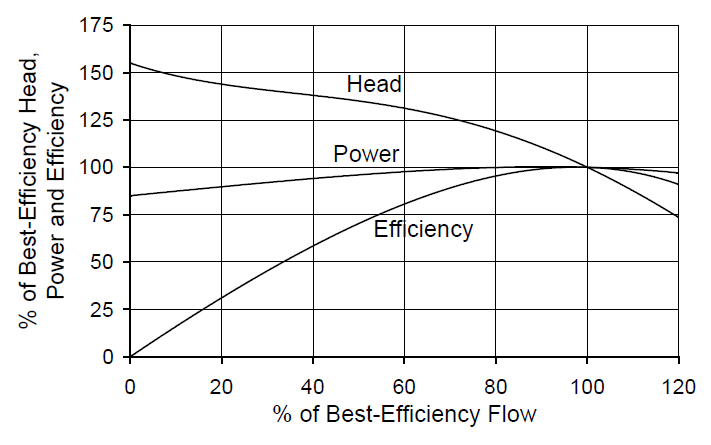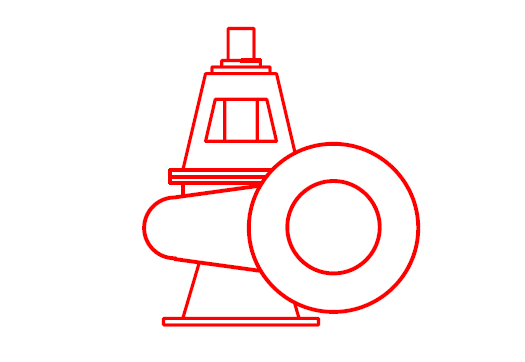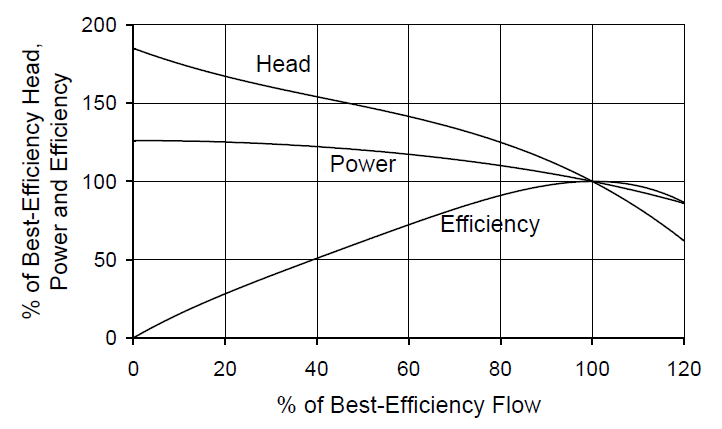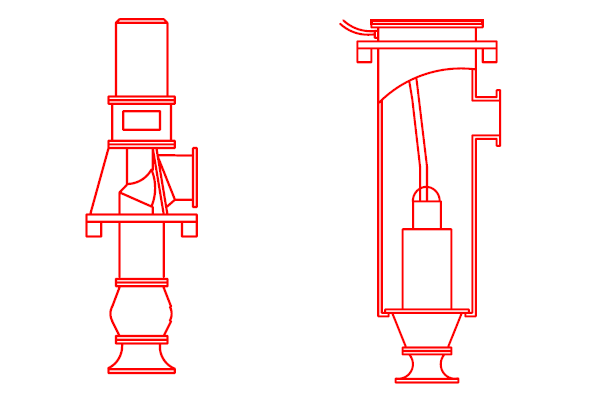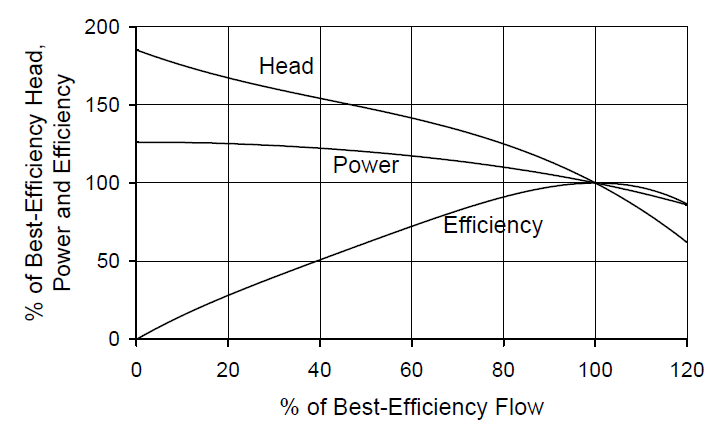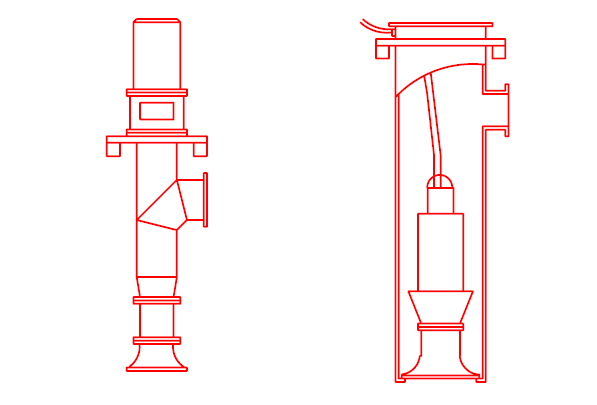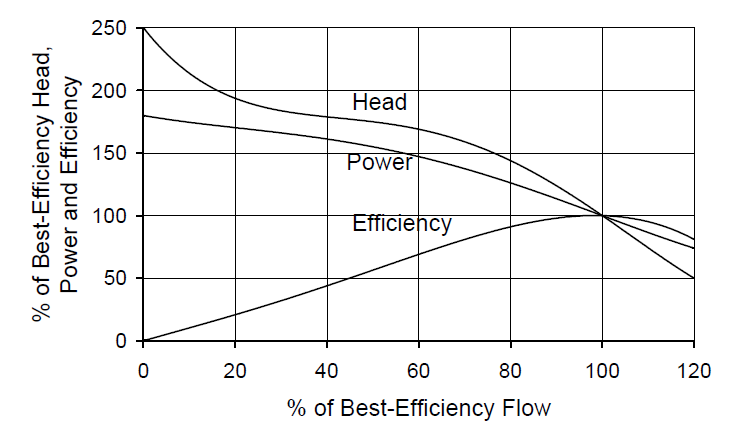14 main rotodynamic pump types and applications
 Dec 13, 2021|
Dec 13, 2021| View:1855
View:1855This article gives details of the rotodynamic pump types listed in the table.
In practice there are dozens of variations on the basic pump themes, each one taking on the attributes dictated by its particular market. Branch positions can change, the shaft can be horizontal or vertical or even inclined, there are many options in shaft sealing, the drive may be by fixed or variable speed motor or diesel engine or belt, etc., etc..
The table shows drawings of the most common arrangements of each of the 14 types, together with brief descriptions. They also show typical characteristic curves. However, the actual curve shapes can vary considerably, so the curves produced by the maker of a pump being considered must be checked to make sure they suit the application. Comments on performance are made on the sheets which should help in this respect.
Finally, the main applications of each pump type are listed to help with the choice of pump.
Obviously, this can only be a general guide, the suitability of each selection for an application must be judged on its merits.
| Pump Type / Performance | Description / Applications |
Single Entry Volute - Conventional
Typical Performance
Smaller pumps tend to be relatively low cost with efficiency on the low side. Back wear rings with impeller balance holes (to reduce thrust and gland pressure) cause some efficiency loss. Efficiency falls relatively slowly as flow moves away from best-efficiency. On some pumps of this type , head may fall with reducing flow (as shown). If so, at reduced flow surging may occur and pumps will not run in parallel at low flows. Power may increase considerably beyond bestefficiency flow. To cover this, larger motors may be needed. Some small pumps are fitted with integral speed controllers which can be used for energy saving. | Description Impeller may be mounted on motor shaft, or pump may have its own shaft and bearings with pump driven via a coupling. Standard pumps to ISO 2858 (EN 22858, ex Din 24256) and EN 733, ex DIN 24255, enable back pull-out of rotating element without disturbing pipework, if using spacer coupling, without disturbing motor. Some pumps have special inlet casings for selfpriming. Shaft is sometimes vertical with pump suspended in a sump by a column pipe, with no pump gland, and discharging to surface through a separate pipe between casing discharge flange and column/motor support/mounting plate. Applications General: Cooling water, Service water, Firefighting (special characteristics required). Agriculture: Irrigation (usually with priming device), Borehole (small flows and depths using ejector in borehole). Chemical/Petrochemical: Transfer (superior construction and special materials, often glandless using magnetic drive or canned motor, sometimes vertical sump type). Building Services: Pressure boosting in tall buildings. Dairy/Brewery: Transfer (special stainless steel fabricated construction with crevices avoided to permit ‘Clean in place’). Oil/Gas Refining: Fuel oil, Gas oil, Lubricating oil, Kerosene, Petrol (‘Process’ type, centre-line supported, special shaft seals, complying with API 610) Paper/Pulp: Medium/low consistency stock (special designs with single shrouded impellers, often stainless steel). Power Generation: Large cooling water, (vertical shaft, largest have concrete volutes). Sugar: Milk of lime and syrup. |
Single Entry Volute – Solids Handling
Typical Performance
Efficiency generally low, because of low number of thick impeller vanes, ‘pump-out’ vanes on impeller shrouds and concentric casings. Head usually rises to zero flow. Power usually rises beyond best-efficiency flow, although pumps do not normally operate here. Head/flow/power adjusted by speed (belt drive or variable speed motor) since impellers cannot be cut. | Description Very robust construction. Usually horizontal shaft but some pumps have vertical shaft, using either cantilevered shaft suspended in sump with no gland, or driven by submersible motors. Impellers and casings usually in hard nickel or chrome iron for larger solids, and rubber or polyurethane lined for small solids. Impeller usually screwed on to shaft to protect it. Gland packing flushed with clean water or expeller used to keep gland dry while running. Bearings and front cover axially adjustable to take up wear on radial wear faces. Speed and head are limited to minimise wear. Higher heads achieved by running pumps in series. Applications Brewery: Brewed barley mash (‘wort’). Construction: Drainage (diesel engine driven and self priming by vacuum pump, or vertical submersible motor driven). Metal Manufacture: Mill scale. Mining/Quarrying: Coal washery, Ore washing, Solids transport, Dewatering open cast mines (cantilevered shaft). Paper/Pulp: Wood chips, Liquors, Condensate. Power Generation: Ash handling, Flue gas desulphurisation process. Sugar: Beet tailings, Sugar juices. |
Single Entry Volute – Non-Clogging
Typical Performance
Efficiency can be on the low side, particularly for small pumps. Requirement for ‘non-clogging’ or ‘unchokability’ necessitates use of one or two vane impellers (except in large sizes). Back vanes on impellers to reduce axial thrust and protect seal also absorb power and reduce efficiency. Pumps handling material heavy in grit use multi-vane ‘vortex’ impellers, set back from main flow and having low efficiency. Head will usually rise continuously to zero flow, allowing parallel operation. Power will usually peak reasonably close to bestefficiency flow. Pump is usually required to pass a sphere of between 75 and 150mm diameter. However, ‘sphere size’ is only a crude guide to solids handling performance. | Description Usually vertical pump shaft. Normally, pump will be in wet well using integral submersible internally dry motor, with oil reservoir with two seals between pump and motor to avoid contamination from pumped fluid. Units are usually mounted on rails to guide them down into well, making a self-sealing joint at discharge pipe and allowing simple installation and removal. Submersible motors may require cooling, depending on size of unit and whether they need to operate un-submerged. Cooling may be by enclosed circuit using oil or glycol , or by jacket using pumped liquid where suitable. These units are also used in dry wells, inherently protected against flooding. Sometimes, pumps in dry wells are driven through intermediate shafting by conventional motor on higher floor to avoid flooding. Applications Sugar: Whole beets (horizontal shaft). Wastewater: Raw sewage, Grit-laden flows (‘vortex’ impeller), Settled sewage, Stormwater. |
Single Entry Volute – In-Line
Typical Performance
Efficiency is reduced a little by cramped arrangement of suction and discharge passages. Back wear rings with impeller balance holes (to reduce thrust and gland pressure) cause some efficiency loss. Head usually rises continuously with reducing flow, except on some of the smaller pumps. Power will sometimes rise at higher flows, may require larger motors to cover this. Smaller pumps will often have integral speed control, enabling automatic head control to suit demand. | Description Larger pumps have vertical shafts and are usually located (and often supported) by pipework. Motor is fitted above pump, so that forces on pump flanges do not affect pump/motor alignment. Motor and impeller can be removed without disturbing pipework. Smaller pumps have horizontal shafts and are usually supported by pipework. Canned rotors are used to avoid shaft seals, and bearings are lubricated by pumped liquid. Smaller pumps (up to about 200 mm branches) are often built with two pumps combined, sometimes known as ‘twinpumps’ or ‘twinsets’. These can be used as duty/standby and sometimes in parallel. Applications Building Services: Hot water circulation, Air conditioning. Domestic: Hot water circulation. Oil/Gas Refining: Fuel oil, Gas oil, Kerosene, Petrol. |
Double Entry Volute
Typical Performance
Efficiency good and usually falls away fairly slowly as flow moves away from best-efficiency. Head usually rises continuously with reducing flow, allowing parallel operation. Power often rises at higher flows, so motor powers may need to be increased to suit. Suction performance benefits from two impeller inlets. | Description Usually horizontal shaft, axially split. Lifting cover gains access to rotating element without disturbing pipework or motor. Shaft may be vertical if space is limited or flooding is possible (in which case motor will be on higher floor). Axial hydraulic balance minimises axial thrust. Larger high head pumps have double volutes to reduce radial thrust. In-line branches simplify pipework. Applications General: Cooling water, Fire-fighting (special characteristics required). Agriculture: Irrigation (usually with priming device). Brewery: ‘Wash’ to fermentation tanks. Metal Manufacture: Furnace gas scrubbing. Oil/Gas Production: Main oil line (radiallysplit for higher heads), Tanker loading. Oil/Gas Refining: Crude oil supply (radially-split for higher heads, API 610), Fuel oil, Gas oil, Kerosene, Petrol (‘Process’ type, centre-line supported, special shaft seals, API 610), Tanker loading. Paper/Pulp: Low consistency stock to head box (impeller vanes offset to minimise pulsations). Power Generation: Condensate extraction (vented back to condenser), Large cooling water. Water Supply: River and reservoir extraction, Supply distribution, Boosting. |
Two Stage Volute
Typical Performance
Efficiency reduced a little by losses in crossover passage and inter-stage bush. However, probably more efficient than equivalent single-stage Double Entry Volute pump for same duty. Head usually rises continuously with reducing flow, allowing parallel operation. Two impellers in series produce relatively high head (without expense of using two pumps). Power likely to increase at higher flows, so motor powers may need to be increased to suit. | Description Two impellers are usually mounted back-toback on shaft with pressure breakdown bush in between. Integral cross-over passage from outlet of first stage impeller to inlet of second stage impeller. Second stage gland under first stage discharge pressure, so sealing must suit. Inherent axial balance, so low axial thrust. Applications General: Fire-fighting (special characteristics required). Building Services: Pressure boosting in tall buildings. Mining/Quarrying: Jetting water monitors. Power Generation: Condensate extraction (vented back to condenser). Water Supply: Supply distribution, Boosting. |
Multistage Radial Split
Typical Performance
Used for relatively high head duties where single or two stage pumps are unsuitable. Efficiency suffers somewhat from tight hydraulic passages and relatively large shaft diameter at impellers. Also from larger wear ring clearances on hot pumps. Efficiencies of smaller pumps can benefit from use of thin sheet metal hydraulic components. Efficiency will be better than 1 or 2 stage pumps for high head applications. Head usually rises continuously with reducing flow, allowing parallel operation, but rise to zero flow is minimised to limit maximum pressure on pipework. Power increases at higher flows, so motor powers may need to be increased to suit. | Description Usually three or more stages. Each impeller discharges into a multi-vaned diffuser leading to return guide vanes which feed flow to inlet of next impeller. Stages are held together by long through-bolts. Larger pumps have horizontal shafts and may be driven through step-up gearboxes to increase speed and pressure. All impellers face same direction and rarely have back wear rings, so a balance disc or drum is usually fitted at discharge end with leakage returned to suction. On abrasive duties, a heavy thrust bearing may also be required. On hot duties, may be centre-line supported and use balance drum and thrust bearing. Smaller pumps usually have vertical shafts with motor mounted on top. Hydraulic components may be sheet metal or plastic composite. Applications Agriculture: Small scale irrigation. Building Services: Boiler feed (fabricated stainless steel components in smaller pumps). Metal Manufacture: Descaling (with external thrust bearing). Mining: Dewatering. Oil/Gas Refining: Fuel oil, Gas oil, Kerosene, Petrol (‘Process’ type, Centre-line supported, special shaft seals, complying with API 610), Product pipeline. Power Generation: Boiler feed. Water Supply: Supply distribution (high pressure). |
Multistage Axial Split
Typical Performance
Used for relatively high head duties where single or two stage pumps are unsuitable. Efficiency suffers somewhat from tight hydraulic passages and relatively large shaft diameter at impellers. Also from larger wear ring clearances on hot pumps. Head usually rises continuously with reducing flow, allowing parallel operation, but rise to zero flow is minimised to limit maximum pressure on pipework. Power increases at higher flows, so motor powers may need to be increased to suit. | Description Each impeller discharges into a double volute which feeds flow back to next impeller. Impellers are split into two sets, mounted back-to-back. First set fed by suction at one end of pump and discharges into crossover passage from middle of pump to other end, where it feeds second set of impellers which discharge at centre of pump. A pressure breakdown bush is fitted between last impeller of first set and final impeller. Another breakdown bush is necessary before first impeller of second set, with leakage returned to suction. Axial thrust is basically balanced, so a large thrust bearing is not needed. Axial split of casing involves difficult sealing to atmosphere and between stages. Hot pumps are centre-line supported. Applications Mining: Dewatering. Oil/Gas Production: Water injection, Main oil line. Oil/Gas Refining: Fuel oil, Gas oil, Kerosene, Petrol (‘Process’ type, centre-line supported, special shaft seals, complying with API 610), Product pipeline. Power Generation: Boiler feed. |
Multistage Barrel Casing
Typical Performance
Used for relatively high head duties where single or two stage pumps are unsuitable. Efficiency suffers somewhat from tight hydraulic passages and a large shaft diameter at impellers. Also from larger wear ring clearances on hot pumps. Head rises continuously with reducing flow, allowing parallel operation, but rise to zero flow is minimised to limit maximum pressure on pipework. Power increases at higher flows, but pumps rarely run beyond best-efficiency flow. | Description Stages are built up much as for Multistage Radial Split pump, then inserted into a forged steel barrel casing which provides full pressure containment, which is then closed by a heavy cover. Suction end of barrel is only subjected to suction pressure. Axial thrust is usually accommodated by a balance drum with a thrust bearing to take residual thrust. Hot pumps are centre-line supported. Applications Oil/Gas Production: Water injection, Main oil line. Oil/Gas Refining: Reactor charge (anticorrosive materials and allowance for high differential expansion). Power Generation: Boiler feed. |
Single Stage Well
Typical Performance
Pump efficiency is reasonably good if losses in column pipe, discharge bend and thrust bearing are deducted from motor output. Head is suitable for parallel operation. Power usually peaks at or near best-efficiency flow. | Description Pump is suspended from floor level. Flow enters through a bellmouth to give well distributed flow to impeller (provided intake arrangement feeding pump has been well designed). Impeller discharges to a multivane axial/inward diffuser and thence to column pipe and discharge bend. Discharge flange can be above or below floor. Axial thrust is taken by a thrust bearing below motor, or the motor bearings . The pump can also be driven by a submersible motor. Applications General: Fire-fighting (special characteristics required). Metal Manufacture: Scrubber circulation. Water Supply: River and reservoir extraction. |
Multistage Well
Typical Performance
Pump efficiency reasonably good but submersible motor less efficient than conventional motor. Column pipe losses may be significant in deep well. Head is suitable for parallel operation. Power usually peaks at or near best-efficiency flow. | Description Above-ground motor version is basically similar to Single Stage Well pump, except that several impeller/diffuser stages are connected in series. For high heads or small diameters, radial impellers and diffusers are used (similar to Multistage Radial Split pump arrangement). Shaft drive may be used in wells up to 30m deep, although use in deeper wells may still be economical. Submersible motor version is used in deep wells, with motor mounted below pump to aid cooling. Motor usually water-filled with integral thrust bearing. Applications General: Fire-fighting (special characteristics required). Agriculture: Borehole (driven by shafting or submersible motor). Metal Manufacture: Scrubber circulation. Mining: Dewatering underground mines with submersible motor drive. Oil/Gas Production: Seawater lift. Oil/Gas Refining: Reactor charge (suspended in canister). Power Generation: Condensate extraction (special first stage impellers, suspended in canister). Water Supply: Borehole extraction (driven by submersible motor or shafting in shallow wells). |
Mixed Flow Volute
Typical Performance
Efficiency reasonably good but falls fairly quickly above and below best-efficiency flow. Head rises fairly steeply with reducing flow. Bestefficiency head is relatively low. Instability is possible at around 60% flow. Power rises with reducing flow, so a larger motor may be required to cover this. | Description Generally used for higher flows and lower heads. Usually vertical shaft with bottom entry. Rotating element can be removed without disturbing pipework. Impeller sensitive to inlet conditions so inlet pipe (usually a bend) needs careful design. Motor may be supported from ground level or on a higher floor. Applications Power Generation: Condensate cooling water (largest flows have concrete volutes). Water Supply: Reservoir extraction (very large flows only). |
Mixed Flow Bowl
Typical Performance
Efficiency falls fairly quickly above and below best-efficiency flow. Efficiency of conventional version is reasonably good if losses in column pipe, discharge bend and thrust bearing are deducted from motor output. Submersible motor version loses some efficiency due to losses in canister. Head rises fairly steeply with reducing flow. Bestefficiency head is relatively low. Instability is possible at around 60% flow, limiting the operating range. Power rises with reducing flow, so a larger motor may be required to cover this. | Description Conventional pump is suspended from floor level. Flow enters through a bellmouth to give well distributed flow to impeller (provided intake arrangement feeding pump has been well designed). Impeller discharges to a multi-vane axial/inward diffuser and thence to column pipe and discharge bend. Discharge flange can be above or below floor. Axial thrust is taken by a thrust bearing either below the motor or by the motor bearings. Submersible motor version is usually lowered into a canister below floor. Motors are dry internally, having oil reservoir with two seals between pump and motor to avoid contamination from pumped fluid. Applications Agriculture: Irrigation (often with submersible motor), Land drainage (usually with submersible motor). Wastewater: Stormwater (surface water only). Water Supply: River and reservoir extraction. |
Axial Flow Well
Typical Performance
Efficiency falls quickly above and below bestefficiency flow. Efficiency of conventional version is on the low side, even after losses in column pipe, discharge bend and thrust bearing are deducted from motor output. Submersible motor version loses some efficiency due to losses in canister. Head rises rapidly with reducing flow. Instability is very likely around 60% flow limiting the operating range. Best-efficiency head is low. Power rises rapidly with reducing flow. It is unlikely that motor will be sized to cover power at low flow. Performance is very dependent upon providing good inlet flow to bellmouth. Intake model tests are advisable. | Description Conventional pump is suspended from floor level. Flow enters through a bellmouth to give well distributed flow to impeller (provided intake arrangement feeding pump has been well designed, very important for this pump type). Impeller discharges to a multi-vane axial diffuser and thence to column pipe and discharge bend. Discharge flange can be above or below floor. Axial thrust is taken either by a thrust bearing below motor or by the motor bearings. Submersible motor version is usually lowered into a canister below floor. Motors are dry internally, having oil reservoir with two seals between pump and motor to avoid contamination from pumped fluid. Applications General: Drainage. Agriculture: Irrigation (often with submersible motor), Land drainage (usually with submersible motor). Wastewater: Stormwater (surface water only). |
Source: Guide_to_the_Selection_of_Rotodynamic_Pumps_Final, EUROPEAN ASSOCIATION OF PUMP MANUFACTURERS




